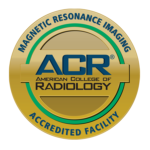Gem State Radiology, the radiology group for Intermountain Medical Imaging, is in full support of this position paper re Digital Breast Tomosynthesis and it’s importance as part of the screening and diagnosis of breast cancer.
____
IDAHO STATE RADIOLOGY SOCIETY POSITION STATEMENT
DIGITAL BREAST TOMOSYNTHESIS
The Idaho State Radiological Society is a state chapter of the American College of Radiology and represents diagnostic radiologists and radiation oncologists practicing in the state of Idaho.
Breast cancer affects one woman in eight in the United States and is the most common cancer diagnosed in women worldwide. Early detection is critical to improving long-term survival due to overall earlier stage at diagnosis. The Idaho Radiological Society is committed to reducing breast cancer mortality by optimizing women’s access to effective breast cancer screening. Regular mammography is the mainstay of breast cancer screening with ample data to support its efficacy in reducing breast cancer mortality (1). Full-field digital mammography became widely utilized over the last decade as studies demonstrated its improved accuracy over traditional film-screen mammography (2).
The latest technologic advance in mammography is digital breast tomosynthesis (DBT), also referred to as “3D mammography.” In addition to the conventional mammogram, a second set of images are reconstructed and displayed as thin “slices” of the breast resulting in less superimposition of tissue compared to conventional 2D mammography. The FDA approved this on February 11, 2011.
Since FDA approval, multiple studies published both within and outside the United States have shown that it has improved accuracy demonstrating both an increased cancer detection rate and a decrease in false positive results; that is results that lead to additional testing in women that do not have breast cancer (3-11).
A significant reduction in unnecessary callbacks from 3D DBT screening mammography have direct value in decreasing patient anxiety and reducing costs associated with call backs including diagnostic mammograms, ultrasounds, and biopsies that are generated by false positives.
3D DBT leads to improved detection of early breast cancers. Smaller cancers may be treated with fewer and/or less invasive procedures, less chemotherapy, less radiation therapy and less breast reconstruction, which not only can improve patient outcomes but also decrease costs.
3D DBT is becoming more common in clinical practice with approximately 1,500 systems currently available in the U.S. As with any medical examination, availability is greatly impacted by reimbursement for the service provided. The Centers for Medicare and Medicaid Services (CMS) include payment codes and reimbursement rate values for DBT in its final 2015 Medicare Physician Fee Schedule and Hospital Outpatient Prospective Payment System and began covering this service as of January 1, 2015. Along with the ACR, the Idaho Radiological Society strongly urges private insurers to cover beneficiaries for DBT as a medically necessary alternative and supplement to 2D mammography for screening and diagnosis of breast cancer and to ultimately facilitate women’s access to these important exams.
1. Feig, S.A., Current status of screening mammography. Obstet Gynecol Clin North Am, 2002. 29(1): p. 123-36.
2. Pisano, E.D., et al., Diagnostic Performance of Digital versus Film Mammography for Breast-Cancer Screening. New England Journal of Medicine, 2005. 353(17): p. 1773-1783.
3. Skaane, P., et al., Comparison of digital mammography alone and digital mammography plus tomosynthesis in a population-based screening program. Radiology, 2013. 267(1): p. 47-56.
4. Ciatto, S., et al., Integration of 3D digital mammography with tomosynthesis for population breast-cancer screening (STORM): a prospective comparison study. Lancet Oncol, 2013. 14(7): p. 583-9.
5. Haas, B.M., et al., Comparison of tomosynthesis plus digital mammography and digital mammography alone for breast cancer screening. Radiology, 2013. 269(3): p. 694-700.
6. Rose, S.L., et al., Implementation of breast tomosynthesis in a routine screening practice: an observational study. AJR Am J Roentgenol, 2013. 200(6): p. 1401-8.
7. Friedewald, S.M., et al., Breast cancer screening using tomosynthesis in combination with digital mammography. JAMA, 2014. 311(24): p. 2499-507.
8. Greenberg, J.S., et al., Clinical performance metrics of 3D digital breast tomosynthesis compared with 2D digital mammography for breast cancer screening in community practice. AJR Am J Roentgenol, 2014.203(3): p. 687-93.
9. Lourenco, A.P., et al., Changes in Recall Type and Patient Treatment Following Implementation of Screening Digital Breast Tomosynthesis. Radiology, 2014: p. 140317.
10. Lee, C.I., et al., Comparative Effectiveness of Combined Digital Mammography and Tomosynthesis Screening for Women with Dense Breasts. Radiology, 2014: p. 141237.
11. McCarthy, A.M., et al., Screening outcomes following implementation of digital breast tomosynthesis in a general-population screening program. J Natl Cancer Inst, 2014. 106(11).

